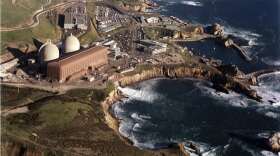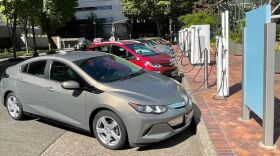-
West Coast states join 14 others to sue Trump administration for blocking development of wind energyA coalition of state attorneys general, including those from Oregon and California, filed a lawsuit Monday against President Donald Trump’s attempt to stop the development of wind energy.
-
Oregonians hoping to buy an electric vehicle this spring could get thousands of dollars from the state to help pay for it.
-
The California Public Utilities Commission will consider on May 9 a new proposal that would change how Californians pay for electricity.
-
An energy project northeast of Klamath Falls will be one of the first new pumped storage hydroelectric systems in the U.S. in 30 years. Developers announced last week the project design is finished.
-
The drop in production comes at a time of higher demand for electricity which is expected to continue.
-
IJPR news staff reviews news from week of March 31, 2024
-
The funds would help California ports expand to handle giant wind turbines and other equipment. California’s first offshore wind farms are on a fast track off Humboldt County and Morro Bay.
-
As rooftop solar projects have plummeted, about 17,000 workers could lose their jobs. Will this derail the state’s climate and clean energy goals?
-
Drops in solar and wind energy production, also known as energy droughts, could potentially last for hours in the Pacific Northwest. New research is aimed at helping grid planners better understand these energy gaps and where solutions, like battery storage, could be best utilized.
-
Granted an exemption, Pacific Gas & Electric will now seek a 20-year permit — but state officials only want the Diablo Canyon nuclear power plant open through 2030 to smooth the transition to renewable energy.
-
In Oregon, some utilities have begun ramping up renewable energy to meet the state's clean energy goals, but there’s a problem: The energy generated from these sources can only be used when the wind is blowing or the sun is shining.
-
Despite expecting 12.5 million electric cars by 2035, California officials insist that the grid can provide enough electricity. But that’s based on multiple assumptions — including building solar and wind at almost five times the pace of the past decade — that may not be realistic.
-
Oregon ranked No. 2 in the nation, after California, for the share of new vehicles sold that are electric and with more fast chargers and federal tax credits on the way, sales are expected to increase.
-
Oregon’s largest private electricity providers are dragging their feet when it comes to transitioning to renewable energy sources, a recent Sierra Club report found.















